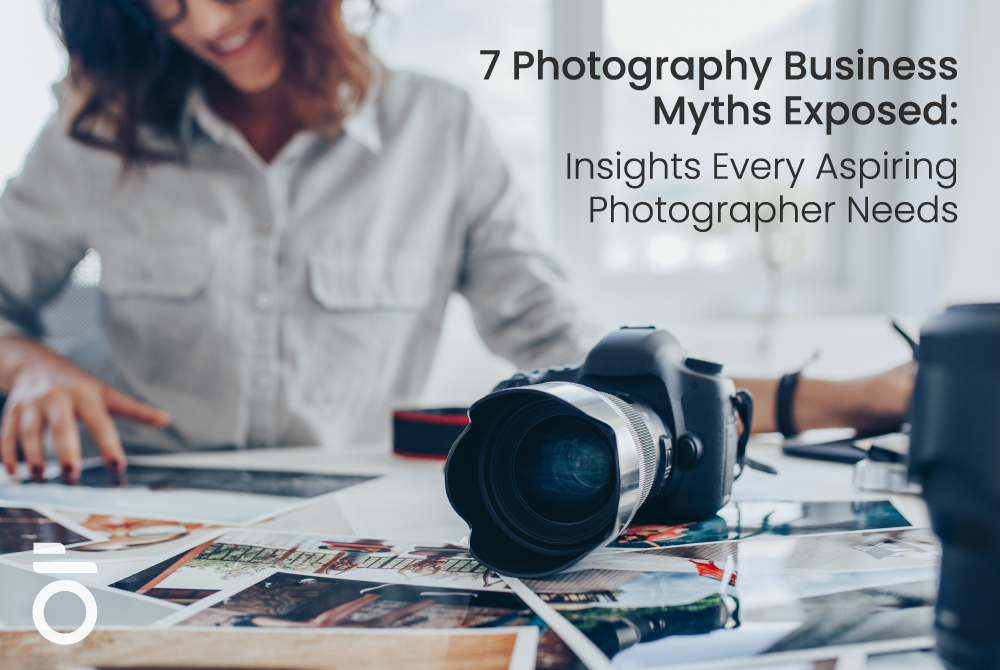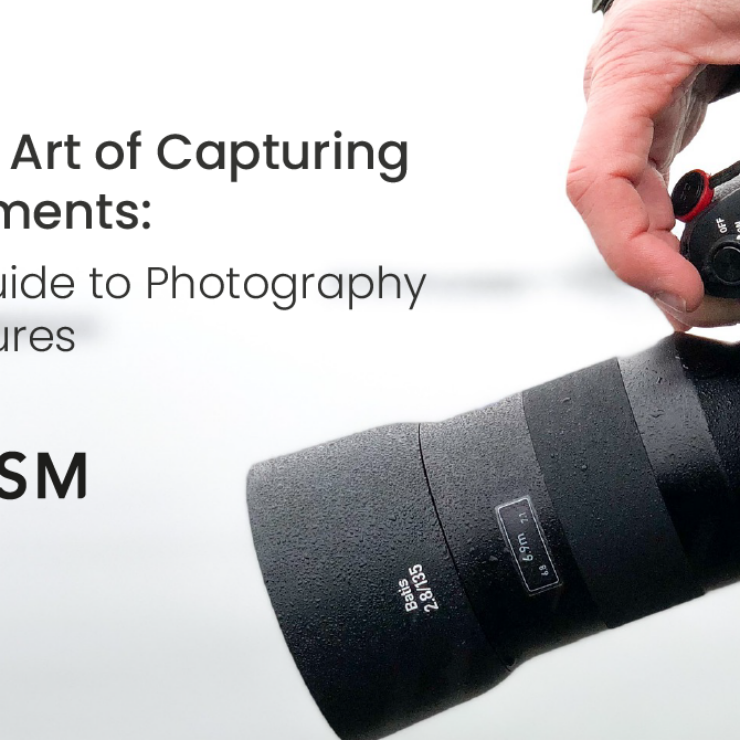If you believe that running a successful photography business is all about just taking great photos, prepare to have your mind changed. Many enter the photography industry armed with passion and talent, only to find themselves struggling due to misconceptions about what it truly takes to thrive. Today, we’re going to debunk some of the most prevalent myths in the photography business, showing you the real deal behind each one. Whether you’re a seasoned professional or just starting out, understanding these truths is essential for anyone looking to make a mark in the photography world.
The “Just Take Great Photos” Myth
Many believe that success in photography comes solely from producing high-quality images. While the quality of your work is undeniably important, this notion overlooks the crucial business and marketing skills needed to attract and retain clients. In reality, a successful photography business requires a multifaceted approach, combining artistic talent with strong business acumen and effective marketing strategies. For instance, utilizing a platform like Essential Studio Manager can streamline client management and project tracking, allowing photographers to focus more on their craft and less on administrative tasks Learn more about our features.
The “More Gear, Better Photos” Myth
It’s a common misconception that investing in more expensive and sophisticated equipment directly correlates with the ability to produce superior photographs. However, the key to stunning images often lies in the photographer’s skill, creativity, and understanding of light and composition. While high-quality equipment can enhance your capabilities, it’s not a substitute for these fundamental skills.

The “Social Media Presence is Enough for Marketing” Myth
With the ubiquity of social media, some photographers assume that having a strong online presence is all it takes to market their business. While social media is a powerful tool for showcasing your portfolio and connecting with potential clients, relying solely on these platforms can limit your reach and professional credibility. Integrating your social media efforts with a comprehensive marketing strategy, including a professional website, SEO, and email marketing, can significantly expand your visibility and attract a broader client base.
The “Post-Processing is Cheating” Myth
Another common myth is that editing photos in post-production undermines the authenticity of photography. On the contrary, post-processing is an integral part of the digital photography process, allowing photographers to correct imperfections, enhance colors, and fully realize their creative vision. It’s not about altering reality but rather about bringing out the best in your photographs.
The “If You Build It, They Will Come” Myth
One of the most pervasive myths in the photography business is the belief that simply setting up a business and portfolio website will automatically attract clients. In reality, the “Field of Dreams” approach doesn’t work in a saturated and competitive market like photography. Building a strong, consistent client base requires active marketing, networking, and client engagement. For instance, SEO (Search Engine Optimization) practices are crucial for making your website visible to potential clients searching for photography services online. Additionally, engaging with your audience through social media, blogging about your work, and leveraging client testimonials can significantly enhance your visibility and attract more business.

The “High Prices Scare Away Customers” Myth
Many photographers fear that setting high prices for their services will lead to a loss of potential clients. While it’s true that pricing needs to be competitive, undervaluing your work can be equally damaging. High pricing, when justified by exceptional quality and service, can actually attract a more discerning client base that values your expertise and is willing to pay for it. It’s about finding the right balance and communicating the value you provide. By showcasing your unique style, experience, and the quality of your work, you can justify higher prices and appeal to clients who prioritize quality over cost.

The “All Exposure is Good Exposure” Myth
The idea that any exposure, regardless of its nature, is beneficial for your photography business is a dangerous myth. While exposure can lead to opportunities, not all of it aligns with your brand values or business goals. Working for free or for exposure, especially with clients or projects that don’t align with your portfolio’s direction, can devalue your work and detract from your professional image. It’s important to be selective about the projects you take on and the exposure you seek. Aim for opportunities that will genuinely enhance your portfolio, connect you with your target audience, and contribute positively to your business growth. Remember, strategic exposure that aligns with your brand and business objectives is far more valuable than widespread, unfocused visibility.
Conclusion
Dispelling these myths is crucial for anyone serious about making a career in photography. Understanding that success in this industry is not just about the art but also about mastering the business side, investing in your skills over gear, leveraging a comprehensive marketing strategy, and embracing post-production can set you on the right path. Remember, photography is as much about perception and presentation as it is about capturing moments.
People Also Ask
How important is networking in the photography business?
Networking is crucial in the photography business as it opens doors to new opportunities, collaborations, and client referrals. Building relationships within the industry can lead to valuable partnerships and increase your visibility among potential clients.
Can I start a photography business with minimal equipment?
Yes, it’s possible to start a photography business with minimal equipment. Focus on developing your skills and creativity, and invest in equipment as your business grows. It’s more important to know how to use what you have effectively than to have all the latest gear.
What’s the best way to set pricing for my photography services?
Let’s say you’re a portrait photographer with a few years of experience, and you’re trying to set your pricing for portrait sessions. Here’s a simplified example of how you might approach this:
- Market Research: You start by researching other local portrait photographers. You find that prices for a 1-hour session range from $200 to $500.
- Cost Analysis: Next, you calculate your costs. Let’s say your costs (travel, editing, equipment depreciation, etc.) come to $50 per hour.
- Value Addition: You’ve recently attended a workshop on portrait photography and have invested in some high-end lighting equipment, which not only improves the quality of your photos but also the shooting experience for your clients.
- Pricing Strategy: Considering your costs, the market rates, and your unique selling points (improved lighting, workshop knowledge), you decide to set your rate at $350 for a 1-hour session. This rate puts you above the market’s lower end, reflecting the added value you provide, but not at the very top, recognizing that you’re still building your reputation.
- Adjustments: You also decide to offer packages that include additional services, such as extra editing or prints, as a way to increase your average transaction size and provide more value to your clients.
- Review and Adapt: You plan to review your pricing every six months, taking into account any new skills you’ve acquired, feedback from clients, and changes in the market demand or operational costs.
By following a process like this, you can set a pricing structure that is competitive yet fair, and that accurately reflects the value you offer to your clients. It’s crucial to communicate clearly why your services are priced as they are, emphasizing the quality of your work, your experience, and any extras that come with your pricing. This transparency helps build trust with potential clients and justifies your rates, making them more likely to book your services.
Is specializing in one genre of photography better than being a generalist?
Specializing in one genre can help you become an expert in that area, making it easier to market your services and attract clients looking for that specific type of photography. However, being a generalist can also have its advantages, especially in smaller markets where demand for specialized services may be limited.
By understanding and navigating the landscape of photography business myths, you can build a more sustainable and successful career. Remember, the key to success lies not only in your talent but also in how you manage and market your business.




